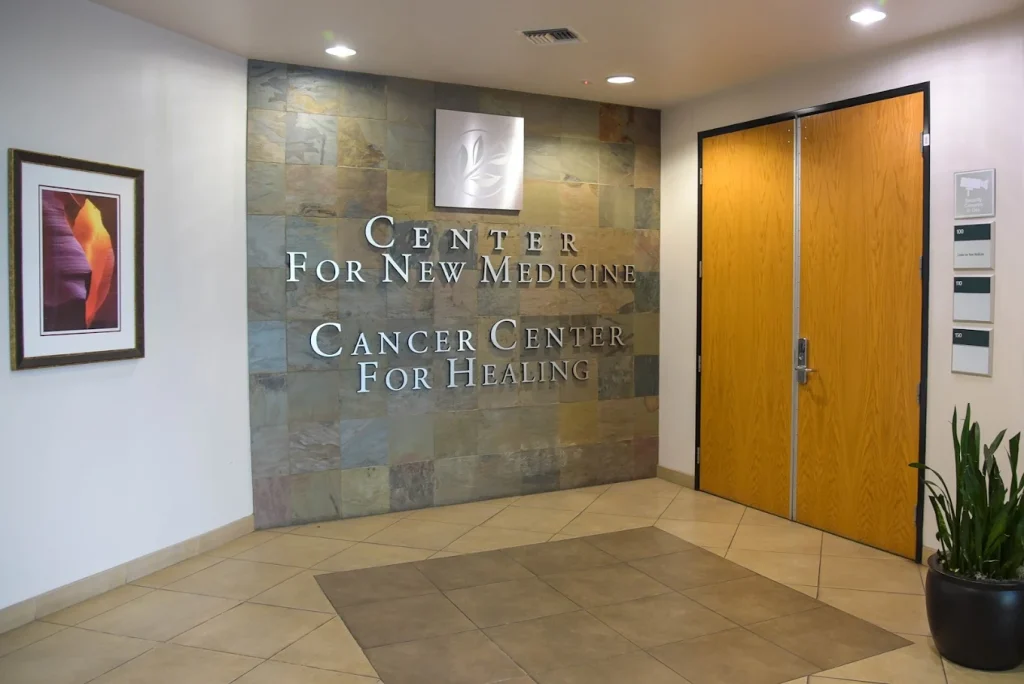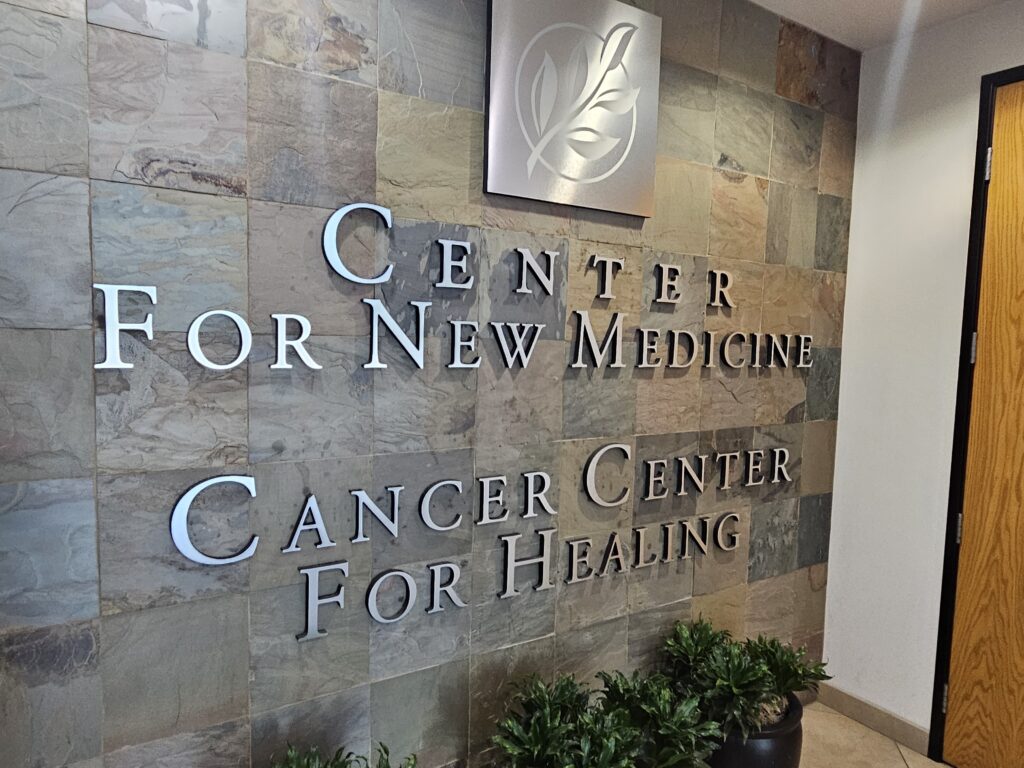As an industry professional or DIY enthusiast, soldering is a common process in electronics and metalworking. However, have you ever considered the potential risks associated with soldering smoke? This article explores the possibility of hidden ingredients in soldering smoke that could contribute to cancer development.
In the following sections, we will discuss the composition of soldering smoke, the potential health risks associated with exposure, and the scientific evidence regarding its link to cancer. We will also provide practical safety measures for those exposed to soldering smoke. Additionally, we will introduce the Cancer Center for Healing and its unique approach to holistic cancer care under Dr. Leigh Erin Connealy.
Key Takeaways:
- Soldering smoke may contain hidden ingredients that contribute to cancer development
- Understanding the composition of soldering smoke is crucial in determining potential health risks
- Scientific evidence regarding the link between soldering smoke and cancer requires further analysis
- Practical safety measures can help minimize the risk of exposure to soldering smoke
- The Cancer Center for Healing provides a holistic approach to cancer care under the guidance of Dr. Leigh Erin Connealy
Understanding Soldering Smoke and its Composition
Soldering is a common industrial process that involves joining two metal pieces together using heat and a filler metal, known as solder. During the soldering process, the heat applied causes the solder to melt and vaporize, producing soldering smoke.
Soldering smoke is a complex mixture of gases, vapors, and particulate matter that can be harmful to human health when inhaled. The composition of soldering smoke can vary depending on the materials being soldered, the type of flux used, and the soldering technique used.
| Component | Potential Health Effects |
|---|---|
| Lead | Brain damage, kidney dysfunction, anemia, and reproductive problems |
| Flux fumes | Irritation of respiratory tract, eyes, skin, and digestive system |
| Formaldehyde | Irritation of the respiratory system, skin allergies, and increased cancer risk |
| Sulfur dioxide | Respiratory problems, heart disease, stroke, and lung cancer |
| Naphtha | Headaches, nausea, dizziness, eye and throat irritation, and skin rash |
The above table showcases some of the substances that can be found in soldering smoke and their potential health effects.
Understanding Soldering Smoke and its Composition
In addition to the components listed above, soldering smoke can also contain other substances, including cadmium, zinc, arsenic, and beryllium, all of which pose health hazards. Although these substances may not always be present in soldering smoke, it is essential to take precautions to minimize exposure to soldering smoke in any scenario where soldering is taking place.
It is important to note that soldering smoke can also pose a risk to those nearby, even if they are not directly exposed to the fumes. Soldering smoke can travel and contaminate surfaces, tools, and other materials, putting others at risk of exposure.
Potential Health Risks of Soldering Smoke
Soldering is a common technique used to join two metal parts together. However, the process of soldering produces smoke that contains various toxic substances that can be damaging to health if inhaled regularly.
Soldering smoke contains a range of chemicals such as lead, zinc, and copper, which can cause respiratory irritation, lung damage, and even cancer. Exposure to these substances over a prolonged period can lead to chronic health conditions, including asthma, bronchitis, and lung cancer.
The severity of health risks associated with soldering smoke largely depends on the frequency and duration of exposure. Individuals who are involved in soldering work on a regular basis are at a greater risk of developing significant health issues compared to those who have occasional exposure.
It’s important to note that soldering smoke is particularly harmful to individuals who have pre-existing respiratory problems like asthma or chronic obstructive pulmonary disease (COPD). Exposure to soldering smoke can trigger their symptoms, making it more difficult for them to breathe.
“Regular exposure to soldering smoke can cause lung cancer in both smokers and non-smokers.”
“Each year, over 226,000 new cases of lung cancer are diagnosed in the US, and soldering smoke is believed to be one of the causes. To minimize the health risks associated with soldering, it’s essential to take adequate precautions and protective measures.”
In the next section, we will examine the existing scientific evidence regarding the presence of cancer-causing ingredients in soldering smoke.
Cancer-Causing Ingredients in Soldering Smoke: Separating Facts from Fiction
There is growing concern regarding the potential cancer-causing ingredients present in soldering smoke. However, separating facts from fiction can be challenging, especially given the abundance of misinformation that exists.
Lead is one of the primary components of solder, which may lead to a false assumption that soldering smoke contains cancer-causing ingredients. However, lead is not a carcinogen. Rather, it can lead to neurological and developmental problems when ingested or inhaled in large amounts over extended periods. Elevated levels of lead in the blood can also lead to anemia and high blood pressure.
Other substances that are present in soldering smoke include rosin and fluxes, which are used to promote solder flow and prevent oxidation. Rosin is obtained from coniferous trees, and its primary component is abietic acid, which has not been found to be carcinogenic in studies conducted on rats and mice when it is ingested orally in high amounts. However, it is important to note that more research is needed in this area to draw definitive conclusions regarding rosin’s potential impact on human health.
Fluxes, on the other hand, contain a range of chemicals, including hydrocarbons, resins, and inorganic acids. Some studies have suggested that certain types of fluxes may contain carcinogenic substances, such as polycyclic aromatic hydrocarbons (PAHs). PAHs are formed during incomplete combustion of organic materials, and exposure to PAHs has been linked to an increased risk of cancer in humans. However, it is important to note that the amount of PAHs released during soldering is generally low and may not pose a significant risk to human health.
Overall, the available scientific evidence regarding the presence of cancer-causing ingredients in soldering smoke is limited and inconclusive. While some studies suggest that certain substances may pose a risk to human health, more research is needed in this area to draw definitive conclusions.
Understanding the Link Between Soldering Smoke and Cancer
The potential link between soldering smoke exposure and cancer development has been the subject of several scientific studies. While the evidence is not definitive, it suggests that certain chemicals present in soldering smoke may increase the risk of cancer.
Soldering Smoke and Lung Cancer
One study found that individuals who were exposed to soldering fumes had a higher risk of developing lung cancer compared to those who were not exposed. The study also found that the risk increased with longer exposure duration and higher levels of exposure.
The chemicals in soldering smoke that are believed to contribute to lung cancer development include lead, cadmium, and zinc. Additionally, the use of lead-based soldering materials, which is now restricted in many countries, has been linked to increased cancer risk.
Other Types of Cancer
While much of the research on soldering smoke and cancer has focused on lung cancer, there is some evidence to suggest that it may also contribute to the development of other types of cancer. For example, a study conducted in Japan found that individuals who worked in the electronics industry and were exposed to soldering fumes had a higher risk of developing bladder cancer.
Other chemicals present in soldering smoke, such as formaldehyde and benzene, have been linked to various types of cancer, including leukemia and lymphoma.
How Does Soldering Smoke Contribute to Cancer?
The exact mechanism by which soldering smoke contributes to cancer is not fully understood. However, it is believed that the chemicals in the smoke can damage DNA and other cellular components, leading to the development of mutations that may eventually result in cancer.
Additionally, the particles in the smoke can be inhaled and become trapped in the lungs, where they can cause inflammation and contribute to the development of respiratory conditions that may increase the risk of cancer.
Overall, while the link between soldering smoke exposure and cancer is not yet fully understood, the evidence suggests that it may be a risk factor for certain types of cancer. As such, it is important for individuals who are regularly exposed to soldering smoke to take steps to minimize their exposure and to seek medical attention if they experience any symptoms of respiratory or other health conditions.
Safety Measures for Those Exposed to Soldering Smoke
Individuals who work with soldering equipment need to take precautions to minimize their risk of exposure to harmful smoke. Here are some safety measures to consider:
| Measure | Explanation |
|---|---|
| Use of Personal Protective Equipment (PPE) | Wearing respiratory masks, gloves, and protective eyewear can help reduce inhalation of harmful smoke particles as well as prevent skin and eye irritation. |
| Ventilation | Ensuring proper ventilation in the workspace can reduce the concentration of harmful smoke in the air. This can be achieved by opening windows, using fans, or investing in a ventilation system. |
| Proper Soldering Technique | Avoiding overheating of the soldering material and using the minimum amount needed can reduce the amount of smoke produced. |
| Clean Workspace | Cleaning the workspace regularly and disposing of waste properly can prevent the buildup of harmful particles in the workspace. |
By following these safety measures, individuals can reduce their risk of exposure to harmful soldering smoke and protect their health.
Holistic Treatment Modalities for Cancer at the Cancer Center for Healing
The Cancer Center for Healing, located in Irvine, CA, offers a unique and comprehensive approach to cancer care. Dr. Leigh Erin Connealy and her team provide personalized treatment plans that incorporate various holistic treatment modalities.
The center believes in treating the whole person, not just the disease, and uses a combination of traditional and alternative therapies to provide patients with the best possible outcomes.
| Holistic Treatment Modalities Offered at the Cancer Center for Healing |
|---|
| Acupuncture |
| Nutritional Therapy |
| IV Therapies |
| Hyperbaric Oxygen Therapy |
| Infrared Therapy |
| Lymphatic Drainage |
| Chelation Therapy |
| Mind-Body Counseling |
The Cancer Center for Healing’s multidisciplinary approach combines traditional medical treatments, such as chemotherapy and radiation therapy, with natural therapies, such as acupuncture and nutritional therapy.
They also focus on preventing cancer recurrence by helping patients make lifestyle changes that support their overall health and wellbeing.
The Importance of Personalized Treatment Plans
Dr. Connealy and her team recognize that each patient is unique and requires a personalized approach to treatment. They take the time to get to know their patients and understand their individual needs and circumstances.
By tailoring treatment plans to each patient, they can provide the most effective care possible. This approach also helps to minimize side effects and provide a higher quality of life during and after treatment.
The Cancer Center for Healing’s Commitment to Comprehensive Cancer Care
The Cancer Center for Healing is committed to providing patients with comprehensive cancer care that addresses the physical, emotional, and spiritual aspects of the disease.
They work closely with patients throughout their treatment journey to ensure they have the support and guidance they need to achieve the best possible outcomes.
If you or a loved one has been diagnosed with cancer, contact the Cancer Center for Healing today to schedule a consultation. Their team of experts can help you navigate the treatment process and develop a comprehensive treatment plan that works for you.
Comprehensive Cancer Care Under Dr. Leigh Erin Connealy
Dr. Leigh Erin Connealy is committed to providing comprehensive cancer care that addresses the unique needs of each patient. Her approach focuses on integrating both traditional and alternative therapies to achieve optimal outcomes.
At the Cancer Center for Healing, Dr. Connealy and her team of experts believe that cancer treatment should not only address the physical symptoms of the disease but also the emotional and spiritual aspects that can be equally impactful. By taking a holistic approach to cancer care, they aim to help patients cultivate a sense of well-being that supports healing on all levels.
A personalized treatment plan is at the core of Dr. Connealy’s approach. Each patient receives a comprehensive evaluation that considers not only the type and stage of cancer but also their overall health and lifestyle factors. From there, a treatment plan is developed that may include a combination of therapies such as nutrition and lifestyle counseling, homeopathy, IV therapy, and targeted cancer treatments.
Dr. Connealy’s expertise in both traditional and alternative medicine allows her to offer a unique blend of treatments that can be tailored to each individual’s needs. She is dedicated to staying at the forefront of cancer research and incorporating the latest advancements into her practice to maximize patient outcomes.
Treating Different Types of Cancer at the Cancer Center for Healing
The Cancer Center for Healing offers a range of comprehensive treatment modalities for different types of cancer, utilizing a multidisciplinary approach tailored to each patient’s individual needs.
The team at the Cancer Center for Healing, led by Dr. Leigh Erin Connealy, incorporates a variety of conventional and integrative therapies, including immunotherapy, anti-angiogenic therapy, and nutritional therapy.
| Cancer Type | Treatment Modalities |
|---|---|
| Breast cancer | Thermography, BRCA testing, targeted chemotherapy |
| Prostate cancer | PSA testing, MRI fusion biopsy, CyberKnife radiation |
| Lung cancer | CT screening, PET scan, minimally invasive surgery |
| Colorectal cancer | Colonoscopy, genetic testing, integrative cancer treatments |
In addition to these modalities, the Cancer Center for Healing also offers alternative therapies, such as acupuncture and meditation, to complement the traditional treatment options.
By adopting a personalized approach to treating cancer, the Cancer Center for Healing provides patients with comprehensive care that addresses their unique physical and emotional needs.
Section 10: Contact the Cancer Center for Healing for a Consultation
If you or a loved one have been affected by cancer, seeking professional guidance is crucial. The Cancer Center for Healing, located in Irvine, CA, offers a comprehensive approach to cancer care under the guidance of Dr. Leigh Erin Connealy. Their team of experts provides personalized treatment plans that integrate a range of modalities, including nutrition, detoxification, and immune support.
If you are interested in exploring their services further, the Cancer Center for Healing offers consultations. To schedule an appointment or learn more about their approach, please call (949) 680-1880. Don’t wait – take the first step towards comprehensive cancer care today.
Conclusion
In conclusion, it is important for individuals who work with soldering smoke to understand the potential health risks associated with exposure to this substance. While there is no conclusive evidence that soldering smoke contains cancer-causing ingredients, it is still considered a hazardous substance that can cause respiratory problems and other health issues with prolonged exposure.
It is crucial for individuals to take proper safety measures when working with soldering smoke, such as wearing personal protective equipment and ensuring that the work area is well-ventilated. Additionally, individuals who are concerned about their health should seek professional guidance from a qualified healthcare provider.
The Cancer Center for Healing
The Cancer Center for Healing, located in Irvine, CA, offers a comprehensive approach to cancer care that focuses on the integration of various holistic treatment modalities. Under the guidance of Dr. Leigh Erin Connealy, the Cancer Center for Healing provides tailored treatment plans for each patient, taking into account their unique needs and circumstances.
Whether you are looking for a second opinion or seeking a comprehensive approach to cancer care, the Cancer Center for Healing is committed to helping patients achieve optimal health and wellbeing. To schedule a consultation, please call (949) 680-1880.
FAQ
Q: Does soldering smoke have hidden cancer-causing ingredients?
A: In this section, we will explore the potential risks associated with soldering smoke and whether it contains any hidden ingredients that could contribute to cancer development.
Q: Understanding soldering smoke and its composition
A: Here, we will discuss the composition of soldering smoke, including the substances typically present and their potential health effects.
Q: What are the potential health risks of soldering smoke?
A: This section will delve into the potential risks associated with exposure to soldering smoke and the specific health conditions it may contribute to, including cancer.
Q: Are there cancer-causing ingredients in soldering smoke?
A: Here, we will examine the existing scientific evidence regarding the presence of cancer-causing ingredients in soldering smoke. We will separate myths from facts and present an objective analysis.
Q: Is there a link between soldering smoke and cancer?
A: This section will explore the potential connection between soldering smoke exposure and the development of cancer. We will examine relevant studies and discuss the mechanisms that may contribute to this link.
Q: What safety measures can be taken for those exposed to soldering smoke?
A: In this section, we will provide practical safety measures that individuals exposed to soldering smoke can take to minimize their risk, including proper ventilation and the use of personal protective equipment.
Q: What holistic treatment modalities are available at the Cancer Center for Healing?
A: This section will introduce the Cancer Center for Healing located in Irvine, CA, and highlight their holistic approach towards cancer care. We will discuss the comprehensive treatment modalities they offer under the guidance of Dr. Leigh Erin Connealy.
Q: How does Dr. Leigh Erin Connealy provide comprehensive cancer care?
A: Here, we will elaborate on Dr. Leigh Erin Connealy’s approach to comprehensive cancer care. We will discuss the importance of personalized treatment plans and the integration of various modalities.
Q: How does the Cancer Center for Healing treat different types of cancer?
A: This section will explore how the Cancer Center for Healing provides treatment for various types of cancer. We will touch upon the range of therapies available and the multidisciplinary approach taken to address each patient’s unique needs.
Q: How can I schedule a consultation with the Cancer Center for Healing?
A: Here, we will provide contact information for the Cancer Center for Healing and encourage readers to schedule a consultation to explore their comprehensive approach to cancer care. The contact number provided is (949) 680-1880.


















